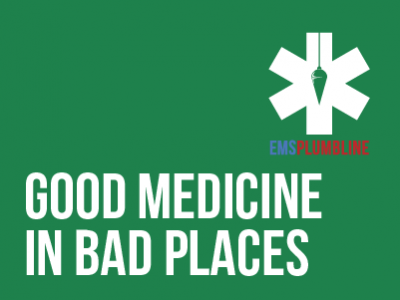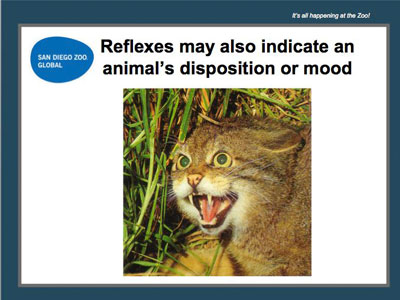 |
TDAH (CDA 8) (Spanish) ADHD (CDA 8) |
2.00 |
El trastorno por déficit de atención con hiperactividad (TDAH) es un trastorno del desarrollo neurológico que afecta al 10 por ciento de los niños estadounidenses de entre 3 y 17 años (Bitsko, et al., 2022). Las personas con TDAH tienden a ser visionarios, soñadores, exploradores, inventores y creadores de tendencias. En este curso, exploraremos el TDAH como un trastorno que puede afectar negativamente la vida de un niño y como un rasgo que puede ser beneficioso para ayudarlo a convertirse en un adulto exitoso.
Attention deficit hyperactivity disorder (ADHD) is a neurodevelopmental disorder affecting 10 percent of U.S. children aged 3-17 (Bitsko, et al., 2022). People with ADHD tend to be visionaries, dreamers, explorers, inventors, and trendsetters. In this course, we will explore ADHD as a disorder that can negatively affect a child’s life and as a trait that may be beneficial in helping a child grow into a successful adult. |
 |
Team Participation: Communicating in Teams |
0.50 |
This course will focus on how to understand the factors affecting team communication, understand the elements of communication and use verbal communication, and communicate supportively and effectively. |
 |
Team Participation: Communicating in Teams (Corrections) |
0.50 |
This course will focus on how to understand the factors affecting team communication, understand the elements of communication and use verbal communication, and communicate supportively and effectively. |
 |
Team Participation: Conflict |
0.75 |
This course will focus on how to identify the symptoms, causes, and processes of team conflict; understand the nature of conflict and how it affects a team; and identify types of power and understand their impact. |
 |
Team Participation: Conflict (Corrections) |
0.50 |
This course will focus on how to identify the symptoms, causes, and processes of team conflict; understand the nature of conflict and how it affects a team; and identify types of power and understand their impact. |
 |
Team Participation: Consensus |
0.75 |
This course will focus on how to identify the prerequisites for and steps of the consensus process and identify and overcome challenges to the consensus process. |
 |
Team Participation: Consensus (Corrections) |
0.75 |
This course will focus on how to identify the prerequisites for and steps of the consensus process and identify and overcome challenges to the consensus process. |
 |
Team Participation: Making a Decision |
0.50 |
This course will focus on how to identify the need for collective decision-making and the rules to be followed while making decisions, identify the requirements for and elements of team decision-making, and identify and use various decision-making methods. |
 |
Team Participation: Making a Decision (Corrections) |
0.50 |
This course will focus on how to identify the need for collective decision-making and the rules to be followed while making decisions, identify the requirements for and elements of team decision-making, and identify and use various decision-making methods. |
 |
Team Participation: Nonverbal Communication and Active Listening |
0.75 |
This course will focus on how to identify types of nonverbal cues and how they mesh with verbal messages, identify the characteristics of active listening and become an active listener, and respond to input in a productive manner. |
 |
Team Participation: Nonverbal Communication and Active Listening (Corrections) |
1.00 |
This course will focus on how to identify types of nonverbal cues and how they mesh with verbal messages, identify the characteristics of active listening and become an active listener, and respond to input in a productive manner. |
 |
Team Participation: Resolving and Handling Conflict |
0.75 |
This course will focus on how to resolve conflict within a team or between yourself and others, achieve positive results through how you handle conflict, and identify and understand conflict resolution styles. |
 |
Team Participation: Resolving and Handling Conflict (Corrections) |
0.75 |
This course will focus on how to resolve conflict within a team or between yourself and others, achieve positive results through how you handle conflict, and identify and understand conflict resolution styles. |
 |
Team Participation: Understanding Team Fundamentals |
1.25 |
This course will focus on how to organize a team, identify its characteristics, and differentiate between traditional and self-directed work teams; to understand the roles and responsibilities of a team member and the stages of team building; understand team goals, give feedback, and anticipate team problems; and communicate effectively with different types of personalities and resolve conflicts. |
 |
Team Participation: Understanding Team Fundamentals (Corrections) |
1.00 |
This course will focus on how to organize a team, identify its characteristics, and differentiate between traditional and self-directed work teams; to understand the roles and responsibilities of a team member and the stages of team building; understand team goals, give feedback, and anticipate team problems; and communicate effectively with different types of personalities and resolve conflicts. |
 |
Technical Rescue—EMS Considerations: Part 1 |
1.00 |
Paramedic, and longtime EMS educator, Aaron Horowitz sits down with medical director, Jeremy Cushman. The thought-provoking discussion that ensues covers a wide range of technical rescues. We believe that much can be done to treat the sick and injured patient during a technical rescue of any type if you prepare for the incident. Many of these concepts you will want to discuss with fellow responders if you have not done so already.
Final Exam: This multiple choice exam is designed to test your knowledge of the material you just reviewed. You have two attempts to gain an 80% or higher on this exam. Please take your time and answer each question carefully. |
 |
Technology Coaching in Education |
0.75 |
Technology has become an integral part of education. This course covers the responsibilities, benefits, and challenges associated with technology coaching in education. It is designed to help teachers effectively integrate technology into the classroom to improve teaching outcomes. It is just one of the many K-12 education courses we offer. |
 |
The 3Ds: Depression, Dementia, and Delirium |
0.50 |
In this course you will learn about the effects of aging with depression, dementia, or delirium, as well as how to prevent, diagnose, and treat these disabilities.
|
 |
The Art of Listening: Understanding Conversations and Ethical Eavesdropping |
0.75 |
This course covers the nuances of effective listening, understanding conversations, and the ethics of eavesdropping. Whether school staff members are catching a snippet of student chatter in the hallway or tuning into classroom discussions, they can harness the power of listening to gain valuable insights into their students' lives and learning experiences. This course aims to equip school staff with the skills to listen actively, interpret conversations, and navigate the ethical considerations surrounding eavesdropping in educational settings. |
 |
The Basics of Operant Conditioning |
1.00 |
Everyone knows that you can fix most problems with a hammer, screwdriver and a pair of pliers. In this class, we will develop an operant conditioning tool box and begin to fill it with some basic tools. Attendees will learn about several key operant conditioning tools and how to use them to solve routine problems in animal management. In addition, class participants will explore a few of the key early researchers and their work in operant conditioning that lead to the development of a technology that we now use to enhance the care of our animals and our safety. Attendees will review the questions to ask prior to beginning any behavior management program. We will explore the conditioning of three common behaviors that are helpful in animal management. |
 |
The Dignity for All Students Act (DASA) (Short) |
0.25 |
This course covers the Dignity For All Students Act and will help you understand how DASA is implemented within schools. |
 |
The Dignity for All Students Act (DASA) for Administrators |
1.50 |
Welcome to The Dignity for All Students Act (DASA) course. This course is designed for anyone who works in a school. It is just one of the many K-12 courses we offer. This course will help you develop new knowledge about students and will help you understand how DASA is implemented within schools. |
 |
The Ethics of Animal Care |
2.00 |
Our industry is one that is at the forefront of the on-going ethical dialogue regarding animals, their uses, welfare and conservation. This course is designed to help animal care workers and others to better understand the role of ethics in their daily professional activity. The class explores the origins and evolving process for ethics associated with human-animal interactions, as well as, a range of current ethical issues and challenges faced by animal care professionals. |
 |
The Fundamentals of Animal Learning Webinar |
1.00 |
Animals, whether you are working with your pet at home or a 300 pound lion, are constantly learning about their environment. Animal care workers and animal trainers can use this behavioral knowledge to their advantage in animal management.
Discover the importance of detailed observation of animal behaviors. Understanding reflexes and situations where reflexive behaviors are likely to occur will enable animal keepers to work safely in a potentially dangerous environment.
Students will also discover a technology to reduce the stresses associated with daily animal management, improving animal welfare
|
 |
The Globally Harmonized System (GHS) for Hazard Classification and Labeling |
0.25 |
This course covers the Globally Harmonized System for Hazard Classification and Labelling. The Globally Harmonized System for Hazard Classification and Labelling, or GHS, is a common and coherent approach to defining and classifying hazards and communicating information on labels and safety data sheets. GHS provides the underlying infrastructure for the establishment of national, comprehensive chemical safety programs. |


























